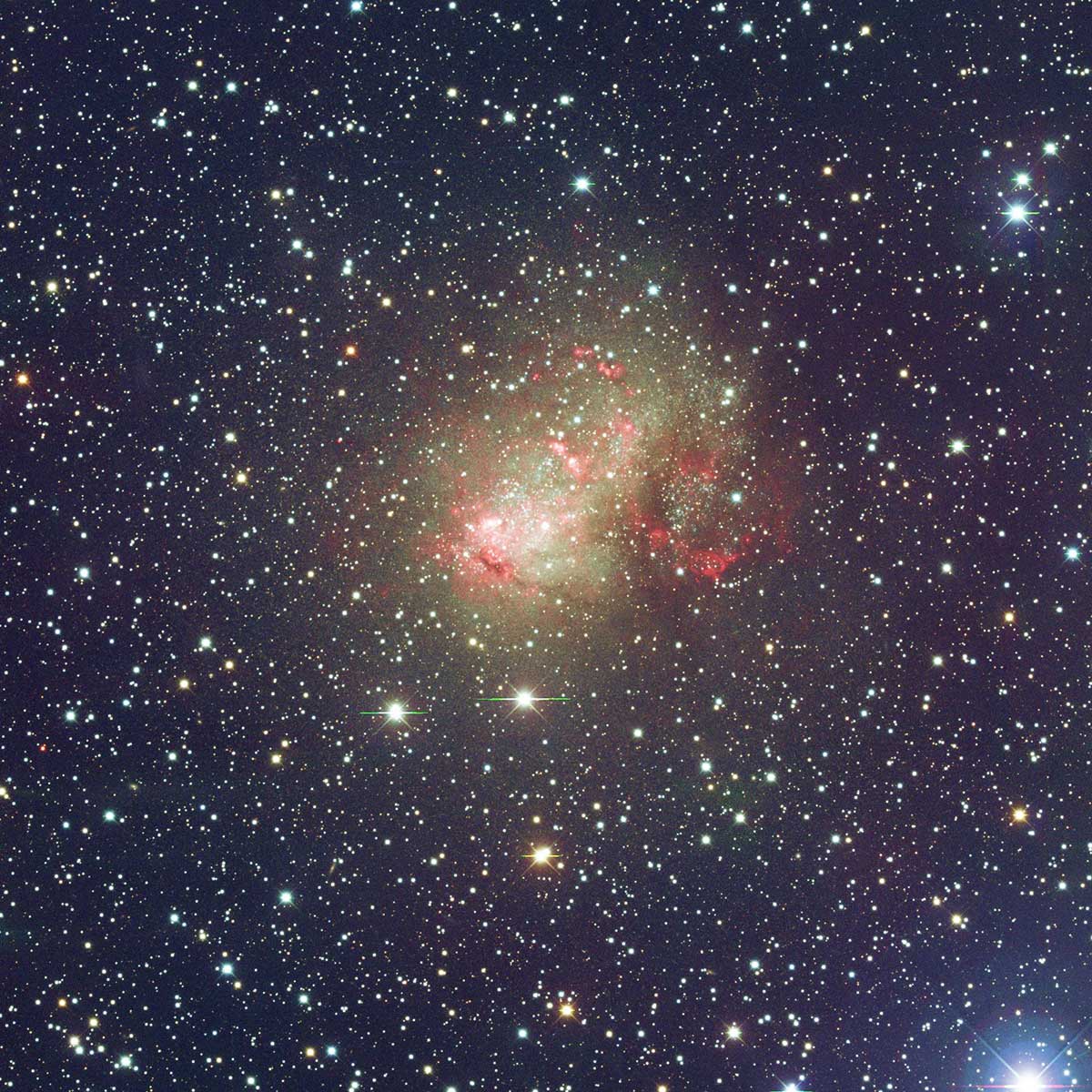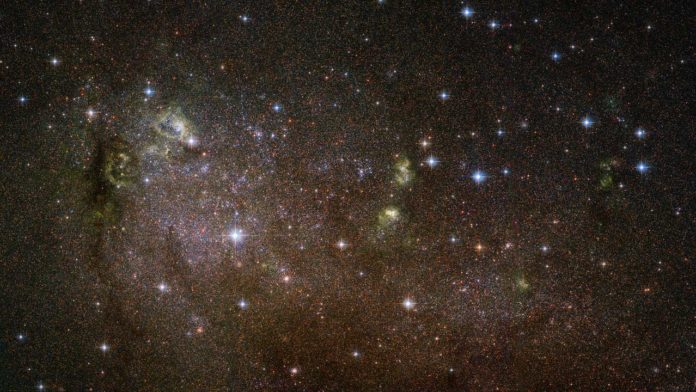Recently Hubble captured an image of an irregular galaxy named IC 10, a losest-known starburst galaxy. The galaxy is experiencing a furious bout of star generation energized by plentiful supplies of cold hydrogen gas.
This gas condenses into large molecular clouds, which then form into dense knots where pressures and temperatures achieve a point adequate to ignite nuclear fusion, thus giving rise to new generations of stars.
As an irregular galaxy, IC 10 does not have the majestic shape of spiral, for example, the Milky Way, or the adjusted, ethereal appearance of curved universes. It is a faint object, in spite of its relative closeness to us of 1.million light-years.

Image: Wikimedia Commons
In real, IC 10 is an irregular galaxy in the constellation Cassiopeia discovered in 1887, by American astronomer Lewis Swift. Despite its closeness, the galaxy is rather difficult to study because it lies near the plane of the Milky Way and is therefore heavily obscured by interstellar matter.
A version of this image was entered into the Hubble’s Hidden Treasures image processing competition by contestant Nikolaus Sulzenauer and went on to win 10th prize.
